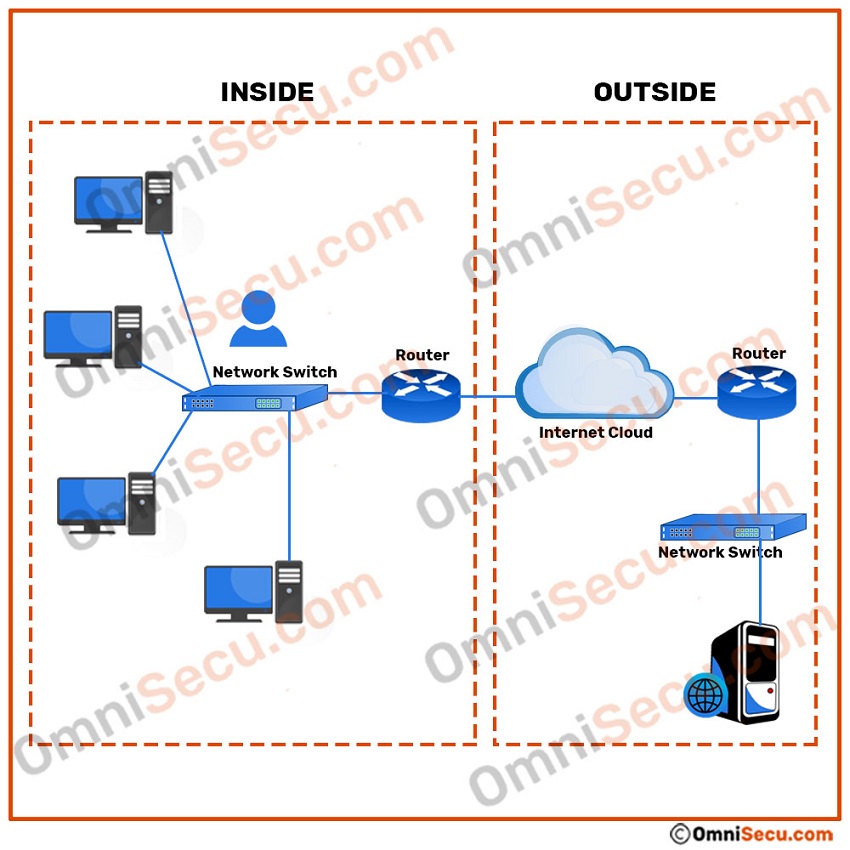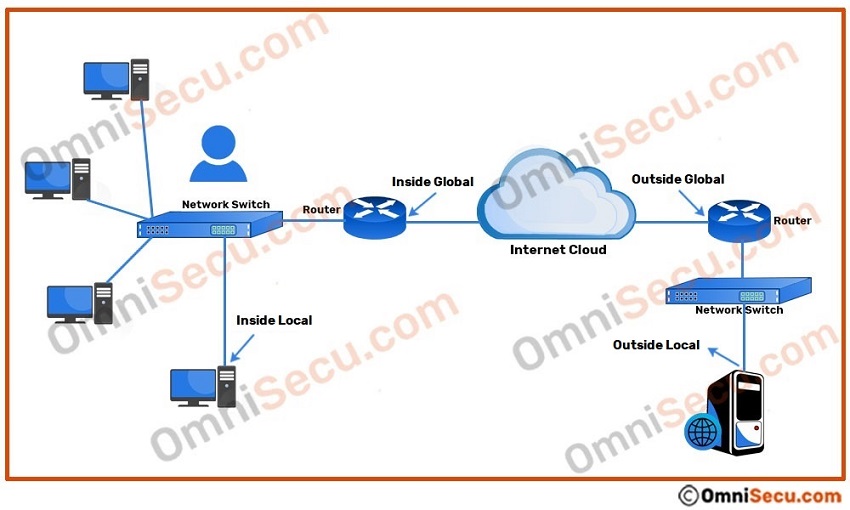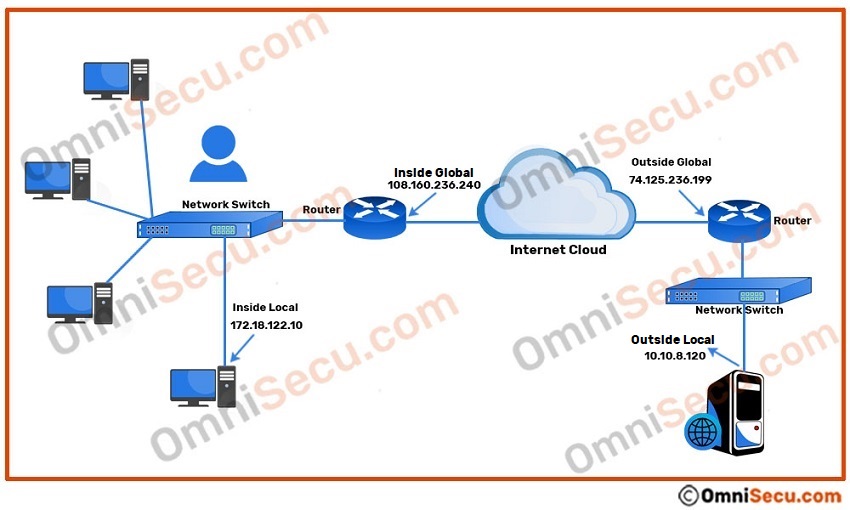Inside Local, Inside Global, Outside Local, Outside Global
Cisco classifies the IPv4 addresses used for Network Address Translation (NAT) as four types. These four address types are based on the perspective of a person who is observing the network topology. These four types of addresses are present in other Network Address Translation (NAT) implementation also. Four address types in Network Address Translation (NAT) are 1) inside local 2) inside global 3) outside global and 4) outside local.
Inside and Outside
First, we need to understand two terms; inside and outside. The term inside is used to refer the IP addresses configured inside the network where the user is standing and observing, including the IP addresses of the LAN router. Outside address is any IP address in the public internet, outside the local network.
Please refer below image to understand what are inside and outside.

Local and Global
Next two terms we need to know are local and global. A local IP address is one which is inside any LAN network. Typically, a local IPv4 address is an RFC 1918 private IPv4 address, belongs to 10.0.0.0/8, 172.16.0.0/12 and 192.168.0.0/24 networks. A global IPv4 address is the public IPv4 addresses configured in the public internet, including the public IPv4 address of the interface of our LAN router facing the public internet.
Now we need to club the terms inside, outside and local, global. Please refer below sections.
Inside local address
As explained above, consider the term "Inside" as inside our network. Inside local address is an IP address assigned to a workstation inside our network. Inside Local addresses are typically private IP addresses, which stay inside our network. Inside local addresses are non-routable private IP addresses.
Inside global address
Inside global address are typically public IP addresses which are assigned to internet facing interface of the router of the network, where the user is standing and observing. Inside Global address is used for communicating with other devices in the public internet. The Inside local IP addresses are removed at the NAT router and translated to Inside global address. Inside global addresses are routable public IP addresses.
An IP datagram moves out to the internet from our private network will always has an IP address from Inside Global address range as the source IP address.
Outside global address
Outside global address is the public IP address assigned to the end device on the other network to communicate other devices in the internet. Outside global addresses are routable public IP addresses.
Outside local address
Outside local address is the real IP address of the end device at other network. Outside local addresses are typically private IP addresses assigned to the computers in the another private network. We cannot know the Outside local addresses because in a NAT enabled network we use the destination IP address as Outside Global address. Outside local addresses are non-routable private IP addresses.
Please refer below image to know inside local, inside global, outside local and outside global addresses.

An example of inside local, inside global, outside local and outside global addresses are shown below.
